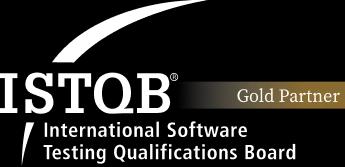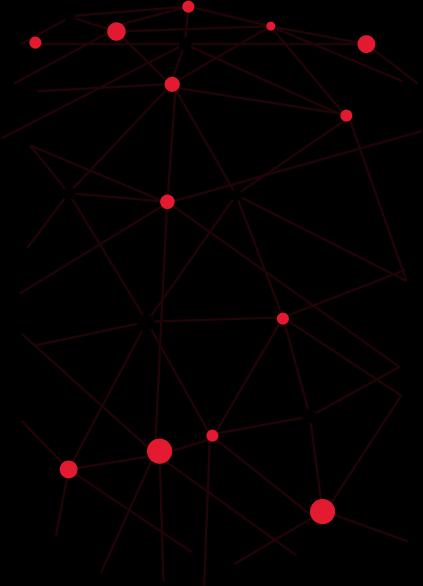
What is AI Chat? How is AI Chatbot Changing the World?
Have you ever chatted with a chatbot without realizing it was artificial intelligence? Today, AI Chat is not only present in customer service but also supports learning, work, and even serves as a companion in daily life. Thanks to advancements in artificial intelligence, these chatbots are becoming smarter, responding more naturally, and helping us solve problems quickly and efficiently.
So, what exactly is AI Chat? How does it work, and which are the best AI chatbots today? This article will provide you with a comprehensive understanding of AI chatbots, covering their definition, working principles, benefits, types, and the most powerful AI tools currently available. If you want to learn more about this technology and how to apply it to your work or daily life, let’s explore it with Tokyo Tech Lab!
I. What is AI Chat?
AI Chat, also known as AI Chatbot, is an automated conversation system powered by artificial intelligence (AI) that can communicate and interact with humans through text or voice. AI chatbots leverage advanced technologies such as Natural Language Processing (NLP) and Machine Learning (ML) to understand, analyze, and respond to user queries naturally and accurately.

Unlike traditional chatbots, which operate based on fixed scripts, AI Chat has the ability to learn and improve its responses over time. As a result, AI chatbots can communicate more flexibly, predict user needs, and provide precise responses. This not only enhances the user experience but also optimizes work efficiency across various industries.
II. Why is AI Chatbot So Popular?
In recent years, AI chatbots have become one of the most widely applied technologies across multiple fields, from e-commerce, finance, and healthcare to education and customer service. Their popularity is not coincidental but stems from the practical benefits they offer to businesses and users. Below are the key reasons why AI Chatbots are increasingly favored.
1. The Rise of Artificial Intelligence and Natural Language Processing (NLP)
Artificial Intelligence (AI) and Natural Language Processing (NLP) have made significant advancements, transforming chatbots from simple auto-reply tools into systems capable of understanding, analyzing, and responding within context. AI models such as ChatGPT by OpenAI, Google Gemini, and Claude AI have demonstrated near-human conversational capabilities, creating a more realistic and engaging chat experience.
Additionally, Machine Learning (ML) and Deep Learning have enabled AI chatbots to learn from data and improve their accuracy over time. As a result, AI Chat not only provides correct answers but can also predict user needs and offer relevant suggestions.
2. The Demand for Automation in Business and Customer Service
Businesses are always looking for solutions to optimize workflows and reduce operational costs. AI Chatbots have proven to be one of the most effective tools for automating customer interactions.
- Reducing workload for employees: Instead of handling hundreds or thousands of messages daily, AI chatbots can efficiently manage these inquiries, allowing businesses to save on staffing costs and focus on more critical tasks.
- 24/7 Availability: Unlike human agents, AI chatbots operate continuously, providing round-the-clock customer support and enhancing service experiences.
- Handling multiple customers simultaneously: While human agents have limitations, chatbots can interact with multiple users simultaneously without delays, significantly improving customer service efficiency.
For example, Amazon and Facebook are major companies leading the adoption of AI chatbots on their platforms, automating customer support and inquiries to significantly enhance user experience.
3. Personalized Customer Experience
One of the greatest strengths of AI Chatbots is their ability to personalize user experiences. Through Machine Learning (ML), chatbots can collect and analyze customer data to provide tailored recommendations.

For example:
- When a customer visits an online shopping website, the AI chatbot can suggest products based on their past purchase history.
- If a customer inquires about a specific service, the chatbot can offer relevant answers based on prior interactions.
This not only enhances customer satisfaction but also helps businesses increase conversion rates and revenue.
4. Easy Integration with Various Platforms and Tools
AI Chatbots can be easily integrated with various platforms, including:
- Websites and mobile apps (e-commerce, financial services, education, etc.)
- Social media (Facebook Messenger, Instagram, Telegram, Zalo, etc.)
- CRM and ERP systems for customer management and workflow optimization
Thanks to their multi-platform integration capabilities, AI chatbots enable businesses to manage customer interactions efficiently while optimizing internal processes.
5. Changing Consumer Behavior and Expectations
Modern consumers demand convenience, speed, and accuracy in online services. They do not want to wait long for customer service responses. AI chatbots effectively meet these demands by providing instant replies, significantly improving customer satisfaction.
Additionally, with the rise of Voice AI technology, many chatbots can now interact using voice, making conversations feel even more natural. Virtual assistants like Siri (Apple), Google Assistant, and Alexa (Amazon) are prime examples of AI-powered voice chatbots that are growing in popularity.
6. Future Growth Potential
AI Chatbots are not limited to customer support but can expand into various fields such as:
- Education: AI chatbots assist students with learning, solving assignments, and improving language skills.
- Healthcare: Chatbots provide health advice, schedule doctor appointments, and help patients track symptoms.
- Finance: AI chatbots assist with banking transactions and offer financial advice.
With these vast potentials, it’s no surprise that more businesses and organizations are investing in AI Chatbot technology to boost productivity and optimize customer experiences.
III. How Does AI Chat Work?
AI chatbots operate by combining multiple artificial intelligence technologies, enabling them to understand, process, and respond to user requests in the most natural way. Natural Language Processing (NLP) and Machine Learning (ML) play a core role in this process. It begins with collecting and analyzing input data, followed by the chatbot processing the information, determining user intent, and finally generating an appropriate response.
When a user enters a question or request, the AI chatbot receives and stores the conversation data. It then applies machine learning algorithms to analyze the data, recognize user intent (Intent Recognition), and identify key entities (Named Entity Recognition - NER). This allows the chatbot not only to understand the surface meaning of words but also to determine the true purpose behind each question. For example, if a user asks, "How do I build a chatbot?" the system can interpret this as a request for information on chatbot development. Based on its learned data, the AI chatbot can respond with a list of basic steps or suggest detailed instructional materials to better assist the user.

Once the chatbot identifies the user's intent, it uses NLP technology to analyze the context and generate a suitable response. If it is a rule-based chatbot, the response will be selected from predefined scripts. However, modern AI chatbots using Generative AI models can create new responses based on learned data, making their answers more flexible and natural. Finally, the chatbot delivers the response to the user in text or voice format, depending on the platform it operates on.
Thanks to its ability to continuously learn from input data, AI chatbots can improve accuracy and naturalness in communication over time. Advanced systems can even analyze user feedback to refine their responses, enhancing the overall interaction experience. As a result, AI chatbots are becoming increasingly powerful tools across various industries and sectors.
IV. Do All Chatbots Use AI?
Not all chatbots use artificial intelligence (AI). In fact, many chatbots operate without AI, relying instead on predefined scripts or fixed programming rules. These chatbots follow a simple question-and-answer model and can only respond if users enter the correct keywords or follow a set of predefined commands. Since they lack the ability to learn or process natural language, such chatbots are limited when dealing with complex or unprogrammed queries.
On the other hand, AI-powered chatbots can analyze context, understand user intent, and refine their responses over time using technologies like NLP and machine learning. This makes them more flexible and capable of engaging in natural conversations instead of just responding based on predefined scripts. However, implementing AI chatbots requires extensive data and computing resources, which not all businesses can afford.
In general, chatbots do not necessarily require AI to function. Depending on the use case, businesses can choose between simple rule-based chatbots or AI-powered chatbots with advanced conversational capabilities.
V. What Are the Different Types of Chatbots?
Chatbots are categorized based on their functionality and underlying technology. The four most common types of chatbots today are:
1. Rule-based Chatbots
Rule-based chatbots are the simplest type, operating on pre-programmed scripts and rule-based logic. When a user inputs a question, the chatbot searches its database and responds with a predefined answer. This enables fast handling of basic requests but limits its ability to process complex or non-standard language queries.

For example, if a user asks, "How do I register an account?" the chatbot can recognize the keyword "register an account" and instantly provide step-by-step instructions. However, if the question is phrased differently, such as "How can I create a new account?" the chatbot may not understand and fail to provide an accurate response.
Pros:
- Easy to build and cost-effective
- Efficient for handling simple tasks
Cons:
- Cannot learn or improve over time
- Limited to predefined scenarios
2. AI-powered Chatbots
AI chatbots, as mentioned earlier, are equipped with artificial intelligence (AI) and leverage advanced technologies like NLP and machine learning to understand and respond naturally and flexibly. Instead of simply searching for keywords, AI chatbots analyze user intent, learn from past interactions, and generate appropriate responses regardless of how a question is phrased.
Pros:
- Can handle complex questions
- Engages in natural conversations
- Continuously improves through learning
Cons:
- Requires large datasets for training
- Demands significant computing resources
- May generate incorrect responses if trained on inaccurate data
3. Hybrid Chatbots
Hybrid chatbots combine both rule-based logic and AI intelligence. When users ask simple questions, the chatbot responds using predefined rules. For more complex queries, AI is activated to analyze the context and provide a suitable response.

For example, if a user inquires about order status, the chatbot can quickly respond using stored data. However, if the user asks about return policies, the chatbot can utilize AI to find relevant information and provide a more detailed explanation.
Pros:
- Offers quick responses for basic queries
- Can handle more complex interactions with AI
- Balances efficiency and flexibility
Cons:
- More complex to develop
- Requires optimization for smooth rule-AI integration
4. Voice Chatbots
Voice chatbots communicate through both text and speech. They use Automatic Speech Recognition (ASR) to convert voice input into text, process it using AI, and then respond through Text-to-Speech (TTS) technology.
Popular examples of voice chatbots include virtual assistants like Google Assistant, Siri, Alexa, and Cortana. If a user asks, "What’s the weather like today?" the chatbot can analyze the speech, retrieve weather data, and respond with an audio reply instead of displaying text on a screen.
Pros:
- Provides a natural and interactive experience
- Convenient for hands-free situations (e.g., driving, working)
Cons:
- Accuracy can be affected by background noise
- Requires strong hardware to process voice data efficiently
Each chatbot type has its own strengths and limitations, depending on business needs. Rule-based chatbots work well for simple tasks, while AI-powered chatbots excel in complex conversations. Hybrid chatbots offer a balance between efficiency and adaptability, while voice chatbots enhance user interaction and convenience. Choosing the right chatbot type can help businesses improve customer service, automate processes, and enhance overall efficiency.
VI. Benefits and Challenges of AI Chat
AI Chat is increasingly being adopted across various industries due to its ability to automate communication, process information quickly, and effectively assist users. However, alongside its outstanding benefits, this technology also presents several challenges that need to be addressed. Below are the key benefits and challenges of AI Chat.
1. Benefits of AI Chat
1.1 Automating Customer Service Processes
One of the biggest advantages of AI chatbots is their ability to automate customer support processes, reducing the workload for employees. Chatbots can handle frequently asked questions, guide customers through problem-solving steps—such as order tracking, appointment scheduling, or basic technical support. This allows businesses to maintain high-quality service without requiring human staff to be available 24/7.
For example, when a customer asks, "How can I return a product?", the chatbot can immediately provide detailed return policy instructions, eliminating the need for customers to wait for a human agent.
1.2 Enhancing User Experience
AI Chat creates a seamless customer experience by providing instant responses and personalized answers based on previous interactions. A smart AI chatbot can recognize returning customers, remember past inquiries, and deliver relevant responses making customers feel more valued and understood.
1.3 Cost Savings for Businesses
AI Chat helps businesses reduce operational costs by automating customer support tasks. Instead of hiring a large team of call center agents, companies can deploy chatbots to handle common requests such as information lookups, technical assistance, or appointment bookings.
Moreover, chatbots can operate 24/7 without breaks, ensuring that customers receive timely support even outside business hours. This allows companies to optimize resources and focus on more critical tasks.

According to a Juniper Research report, chatbots could help businesses save billions of dollars annually by reducing support time and increasing efficiency.
1.4 Multi-Channel Integration and 24/7 Availability
Unlike humans, AI chatbots never stop working and can provide round-the-clock support across multiple platforms, including:
- Websites and mobile apps
- Social media (Facebook Messenger, Zalo, WhatsApp, Telegram)
- Email and live chat support
This omnichannel capability enables businesses to expand their customer reach without being constrained by time or location.
1.5 Customer Data Analysis for Business Optimization
AI Chatbots not only support customers but also collect and analyze data from conversations. Businesses can leverage this data to better understand customer needs, preferences, and behaviors, allowing them to refine marketing and sales strategies more effectively.
2. Challenges of AI Chat
2.1 Limited Context Understanding
Despite significant advancements, AI Chat still struggles to fully understand context in certain situations. Natural language is highly complex and ambiguous, and many questions can have different meanings depending on the context.
If a chatbot is not trained well, it may provide irrelevant or frustrating responses to users.
Solution: Businesses must continuously update and train their chatbots with real-world data to improve contextual accuracy.
2.2 Privacy and Data Security Risks
AI chatbots process a vast amount of personal data and user transactions, making data security a critical challenge. If a chatbot lacks robust security measures, it may become a target for cyberattacks or unintentionally expose sensitive information.

2.3 High Development and Maintenance Costs
While AI chatbots reduce costs in the long run, the initial investment required to develop and maintain a high-quality AI chatbot is significant.
- Developing an AI chatbot requires an expert AI team, extensive training data, and a strong backend infrastructure to ensure stable performance.
- AI chatbots must be continuously updated and optimized to learn from real-world interactions, minimize errors, and improve accuracy.
If a company lacks the resources to maintain its chatbot, it may quickly become outdated or fail to meet customer expectations.
2.4 Cannot Fully Replace Human Interaction
While AI Chat can handle many automated tasks, it cannot completely replace humans, especially in situations requiring:
- Empathy
- Logical reasoning
- Creative problem-solving
For complex or sensitive customer inquiries, human agents are still necessary to ensure a high-quality customer experience.
VII. What Are the Real-World Applications of Chatbots?
AI chatbots are increasingly being applied in various fields thanks to their ability to automate communication, quickly process information, and enhance user experience. Below are some of the most common real-world applications of AI chatbots in daily life and business.
1. Automated Customer Support
One of the most popular applications of AI chatbots is providing 24/7 customer support. Instead of relying on hotline staff or manually responding to emails, businesses can use chatbots to:
- Answer Frequently Asked Questions (FAQ): Chatbots can provide information about products, return policies, pricing, usage instructions, etc., reducing the workload for customer service staff.
- Automatically Handle Support Requests: For simple inquiries such as checking order status or guiding account registration, chatbots can quickly resolve issues without human intervention.
- Multilingual Support: Some advanced AI chatbots can communicate in multiple languages, helping businesses reach a global audience.
Example: Zendesk’s chatbot is widely used by companies to automate customer service, reducing response time and improving user satisfaction.
2. Optimizing Sales and Marketing Processes
AI chat enhances conversion rates and streamlines sales processes by engaging potential customers, providing product recommendations, and personalizing shopping experiences based on user behavior. Some chatbots are even integrated with advertising platforms to deliver targeted marketing.
- Recommending products based on customer needs and preferences.
- Automatically sending promotions and discount codes to encourage purchases.
- Collecting potential customer information (lead generation) and assisting telesales.
Example: Drift chatbot is a popular AI tool in marketing, helping businesses engage with potential customers and personalize the shopping experience.

3. Support in Education and Training
AI chatbots are also widely used in education to improve learning and training methods:
- Virtual Teaching Assistants: Students can use chatbots to ask questions and clarify lessons without waiting for a teacher's response.
- Exam Preparation and Review Assistance: Some AI chatbots can generate quiz questions, test knowledge, and suggest study plans based on a student’s strengths and weaknesses.
- Corporate Employee Training: Many companies use chatbots to guide new employees, provide training materials, and automate onboarding processes.
Example: Duolingo utilizes AI chat to personalize language learning experiences, allowing users to practice conversations with a chatbot.
4. AI Chatbots in Healthcare and Medical Support
The healthcare industry is also integrating AI chatbots to improve medical services, especially in remote care, health consultations, and patient support without requiring direct doctor visits. Some key applications include:
- Basic Medical Consultation: Chatbots can provide preliminary recommendations based on user-reported symptoms, helping them determine the next steps before seeing a doctor.
- Appointment Scheduling Support: Many clinics and hospitals use chatbots to facilitate quick and easy appointment bookings.
- Medication Reminders and Health Tracking: Chatbots can send alerts to remind patients to take their medications on time and track their health conditions over time.
Example: Babylon Health’s chatbot can assess health symptoms and provide advice based on medical data.
5. AI Chatbots in Finance and Banking
Banks and financial institutions are leveraging AI chatbots to enhance customer experience:
- Personal Financial Assistants: Chatbots help users manage expenses, track transactions, and offer financial advice.
- Banking Transactions Support: Customers can check account balances, transfer money, or inquire about loan packages through chatbots.
- Security and Fraud Detection: Some AI chatbots can monitor accounts and alert users about suspicious transactions.
6. AI Chatbots in the Travel and Hospitality Industry
The travel and hospitality industry is using AI chatbots to enhance customer experience and streamline booking processes:
- Travel and Hotel Booking Assistance: Chatbots help customers search for, compare, and book flights or hotels easily.
- Travel Guides and Destination Support: Chatbots provide information on tourist attractions, weather conditions, and transportation options.
- Guest Services During Stays: Some hotels use chatbots to facilitate room service requests, food orders, and customer support.
VIII. Top 10 AI Chatbots Today
Below is a list of the top 10 AI chatbots, each with unique strengths catering to different needs such as customer support, education, work, or entertainment.
1. ChatGPT (OpenAI) – The Most Versatile AI Chatbot
ChatGPT by OpenAI is one of the most powerful and widely used AI chatbots today. Powered by the GPT-4 language model, it can handle a wide range of tasks, from answering questions and generating content to assisting with programming. This makes it a valuable tool for both individuals and businesses.
However, the free version has some feature limitations, and ChatGPT may occasionally provide inaccurate information. Despite this, it remains a top choice for those looking to harness AI capabilities for work and learning.
2. Google Gemini – Google's AI Chatbot
Google Gemini (formerly known as Bard) is developed by Google and has a significant advantage due to its access to Google Search. This allows Gemini to provide more accurate responses, especially in fields that require constant updates such as news, scientific research, and technology.

Additionally, Gemini integrates deeply with Google’s ecosystem, including Docs, Gmail, and Sheets, making it highly useful for work-related tasks. However, its responses sometimes rely too heavily on search data and may lack creativity compared to ChatGPT.
3. IBM Watson Assistant – AI Chatbot for Businesses
IBM Watson Assistant is an AI chatbot specifically designed for businesses. It can automate customer support processes, handle requests, and integrate with internal systems. This makes it an ideal choice for large organizations looking to optimize customer service while ensuring data security.
Although IBM Watson Assistant offers high customization and flexible integration, it requires programming skills for implementation and comes with a high cost, making it more suitable for large enterprises rather than individuals or small startups.
4. Microsoft Copilot – AI Assistant for Office Work
Microsoft Copilot is designed to optimize office tasks, especially when integrated with Microsoft 365 applications such as Word, Excel, Outlook, and Teams. This chatbot can summarize documents, analyze data, draft content, and assist with team collaboration.

Copilot significantly saves time on work tasks but only functions well within the Microsoft ecosystem and requires a premium Microsoft 365 subscription to unlock all features.
5. Claude AI – AI Chatbot for Natural Conversations
Claude AI, developed by Anthropic, stands out for its natural communication capabilities and high security. This chatbot minimizes the generation of misleading content and understands context better than some competitors.
Claude AI is particularly useful for those who need assistance in drafting long-form content, analyzing information, and having smooth conversations. However, it is not as widely used as ChatGPT or Google Gemini and may be slower in some cases.
6. Replika – Personalized AI Chatbot
Replika is an AI chatbot specializing in personalized conversations, acting as a virtual friend that allows users to interact, share emotions, and relieve stress.
This chatbot is ideal for those seeking a smart conversational companion rather than a chatbot for work or research. However, some advanced features require a paid subscription, and it is not suitable for professional tasks or academic support.

7. Drift Chatbot – AI Chatbot for Marketing
Drift is an AI chatbot focused on marketing and sales, automating customer consultations, increasing conversion rates, and improving sales performance.
This chatbot excels in collecting customer data, personalizing experiences, and integrating with CRM systems like Salesforce and HubSpot. However, it is more suitable for e-commerce businesses than for individual users.
8. Zendesk Chatbot – AI Customer Service Tool
Zendesk is one of the most powerful AI chatbots for customer service. It helps businesses automate responses to common queries, categorize support requests, and improve customer care efficiency.
With strong integration capabilities within the Zendesk system, this chatbot is an ideal solution for businesses looking to enhance customer service without expanding their workforce. However, its high cost can be a challenge for small businesses.

9. Jasper AI – AI Chatbot for Marketing Content
Jasper AI is a chatbot designed for creating marketing content, including blog posts, advertisements, and email marketing campaigns. This tool uses AI to generate SEO-friendly content, optimize ad messaging, and speed up the creative process.
However, Jasper AI cannot completely replace a professional writer, as its content sometimes requires editing to ensure quality and creativity.
10. Botsonic – AI Chatbot for Automated Conversations
Botsonic is an AI chatbot that helps businesses automate conversations without requiring programming knowledge. It supports easy integration into websites, Facebook Messenger, and WhatsApp, enabling businesses to communicate with customers efficiently.
IX. How to Build an AI Chatbot?
Building an AI chatbot requires a combination of technology, data, and operational strategy to ensure effective performance, natural interaction, and value for users. Below are the key steps to developing a complete AI chatbot.
1. Define the Chatbot’s Purpose and Scope
Before starting, it is crucial to determine the chatbot’s primary goal and scope of operation. Some key questions to consider:
- Will the chatbot be used for customer service, consulting, sales support, or entertainment?
- Which platforms will it operate on? (Website, Facebook Messenger, Zalo, Telegram, or mobile apps?)
- What level of automation is required? (Basic responses only, or intelligent learning and adaptive interactions?)
2. Choose the Technology and Development Platform
There are two main approaches to developing an AI chatbot:
Using pre-built chatbot platforms (no coding required): Platforms like Dialogflow (Google), IBM Watson, Microsoft Bot Framework, Chatfuel, and ManyChat allow chatbot creation without programming knowledge, suitable for small businesses or quick projects.

Developing a custom chatbot (requires coding): If you want a chatbot with advanced language processing and learning capabilities, you need to use AI frameworks and libraries such as:
- NLP (Natural Language Processing): NLTK, SpaCy, Google Cloud NLP
- Machine Learning & AI: TensorFlow, PyTorch
- Conversational Processing: Rasa, BotPress
3. Design Conversation Flow and Interaction Scenarios
An AI chatbot needs a well-structured conversation flow to provide natural and accurate responses. The design process includes:
- Identifying common questions (FAQs) the chatbot will handle.
- Creating conversation scripts for specific scenarios.
- Programming flexible responses that can be personalized for each user.
4. Train the Chatbot with Real Data
AI chatbots must be trained with real-world data to improve their understanding and responses. This process involves:
- Collecting conversation data from users.
- Using machine learning models to enhance contextual understanding.
- Continuously optimizing the chatbot by updating it with new data.

5. Deploy the Chatbot and Integrate with Systems
Once developed, the chatbot needs to be integrated into the desired platforms, such as:
- Website: Embed the chatbot using APIs.
- Facebook Messenger/Zalo: Use platform-specific APIs for direct interaction.
- Mobile Apps: Integrate the chatbot into the application for seamless user support.
6. Test and Optimize the Chatbot
After deployment, the chatbot must be tested to ensure accuracy. Testing steps include:
- Checking the accuracy of chatbot responses.
- Identifying and fixing errors to improve language processing.
- Updating conversation content to make the chatbot smarter over time.
7. Monitor and Continuously Upgrade the Chatbot
AI chatbots are not static systems; they need continuous upgrades and optimization to meet user demands. Some ways to improve chatbots post-deployment include:
- Analyzing conversation data to understand user behavior.
- Adding new features, such as multilingual support or voice recognition.
- Enhancing security, especially for chatbots in finance and healthcare industries.
X. Conclusion
The development of AI chatbots has opened new opportunities for communication, automation, and business support. From enhancing customer experience to assisting individuals in learning and content creation, AI chatbots are becoming an essential part of the digital world.
Whether you need a chatbot for chatting, information retrieval, or business support, choosing the right tool will help you maximize the power of artificial intelligence. As technology continues to advance, AI chatbots will become even smarter, delivering more natural and effective interactive experiences in the future.
If you're interested in the latest technology trends, don’t forget to follow our Blog for more valuable insights!
The main advantage of Botsonic is its ease of use, but it is not as powerful as high-end AI chatbots like ChatGPT or Watson Assistant when handling complex tasks. This makes it a suitable choice for small businesses or startups looking to deploy a chatbot quickly and cost-effectively.
SHARE THIS ARTICLE
Author
Huyen TrangSEO & Marketing at Tokyo Tech Lab
Hello! I'm Huyen Trang, a marketing expert in the IT field with over 5 years of experience. Through my professional knowledge and hands-on experience, I always strive to provide our readers with valuable information about the IT industry.
More Posts



About Tokyo Tech Lab
Services and Solutions
Contact us
© 2023 Tokyo Tech Lab. All Rights Reserved.







